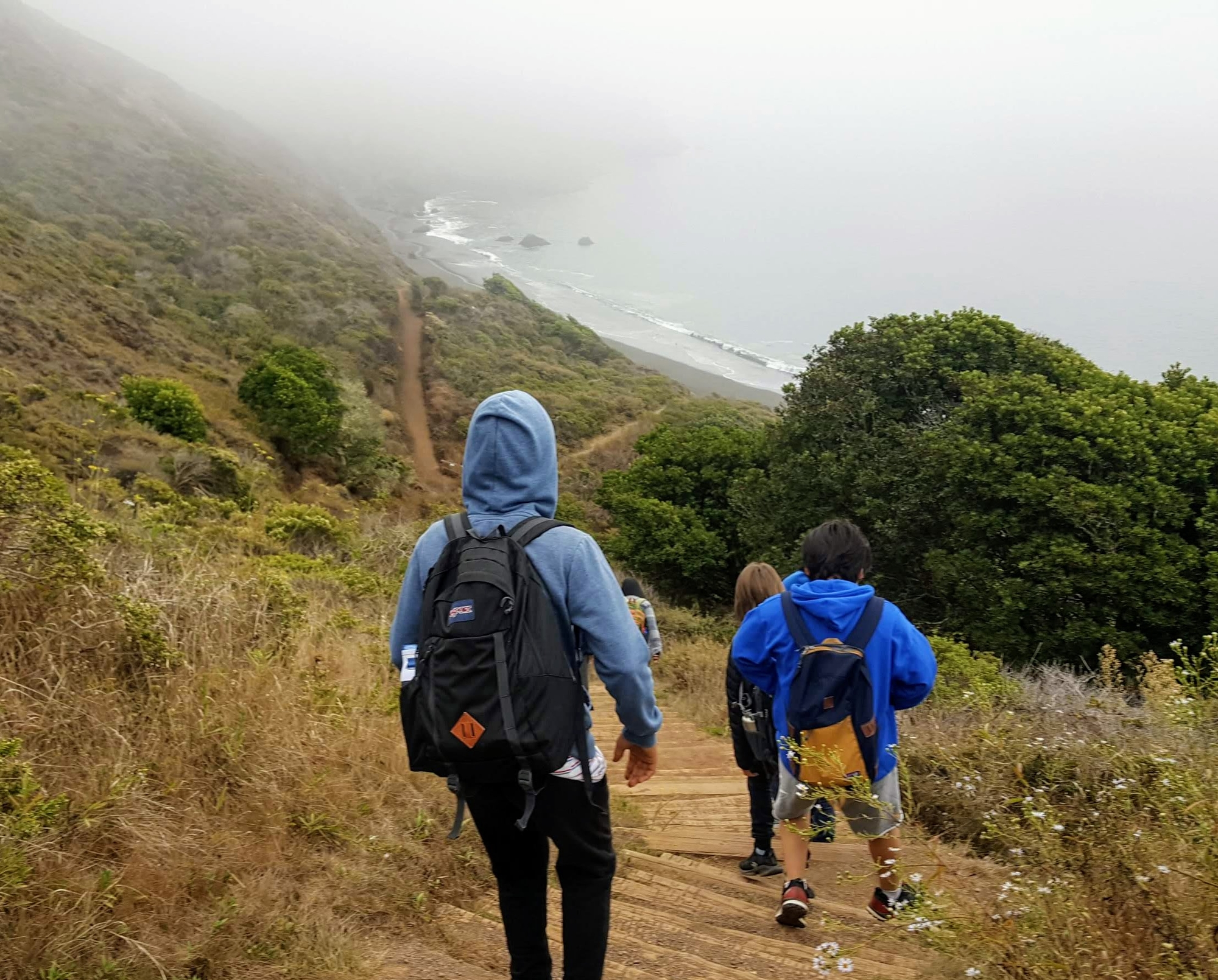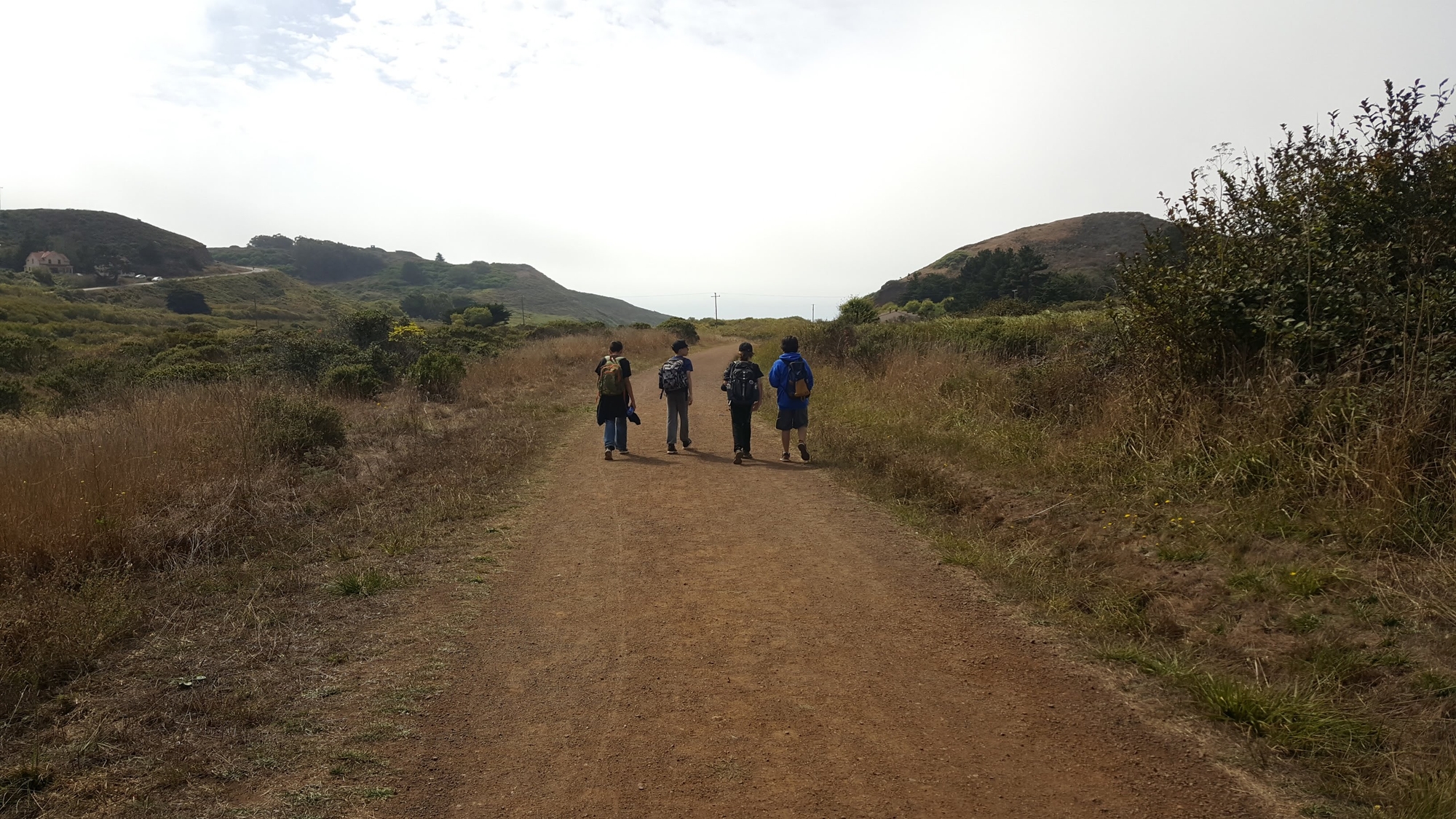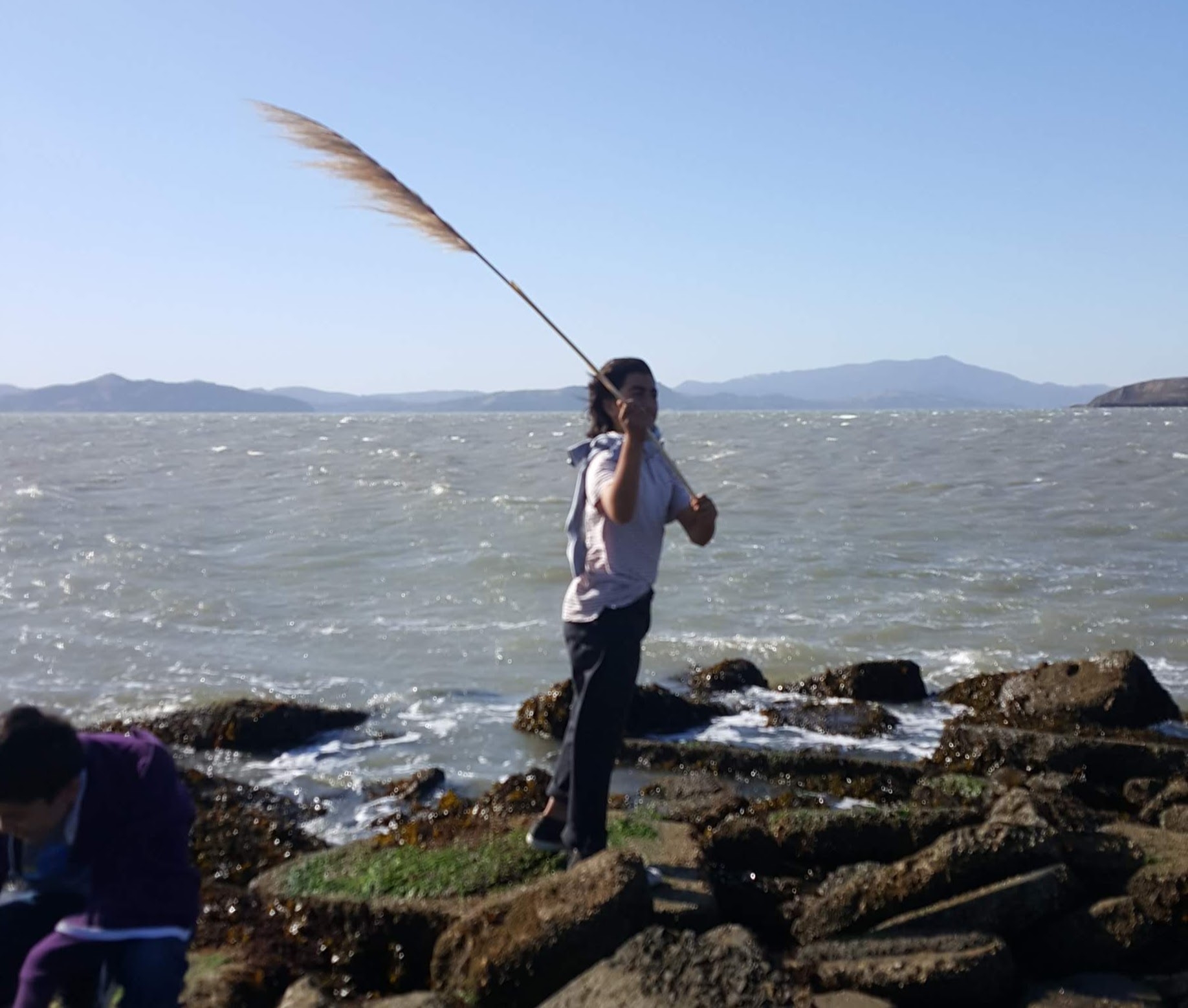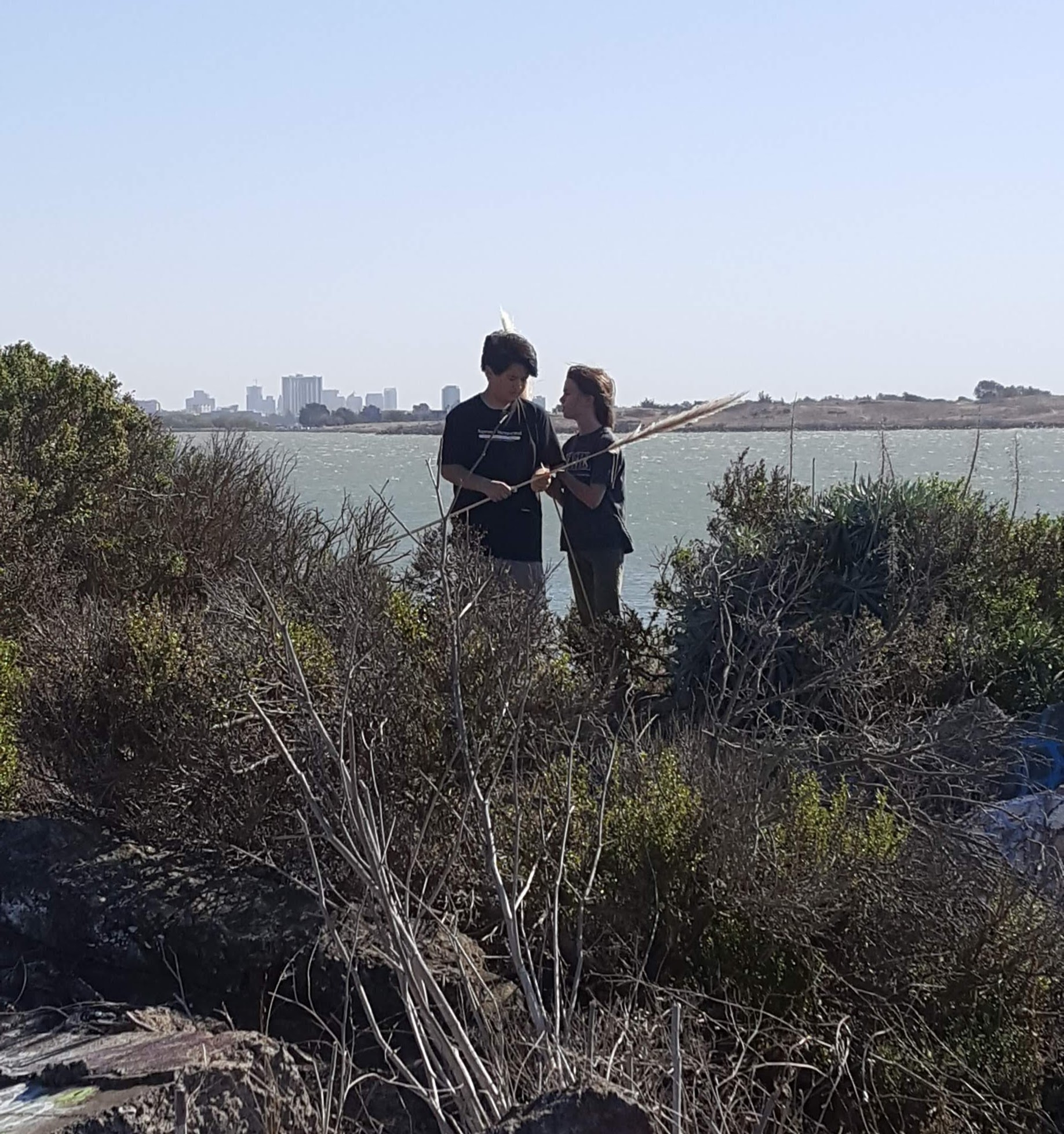Initiation and Adulthood
What does it mean to be 'initiated'? And what does that have to do with adulthood?
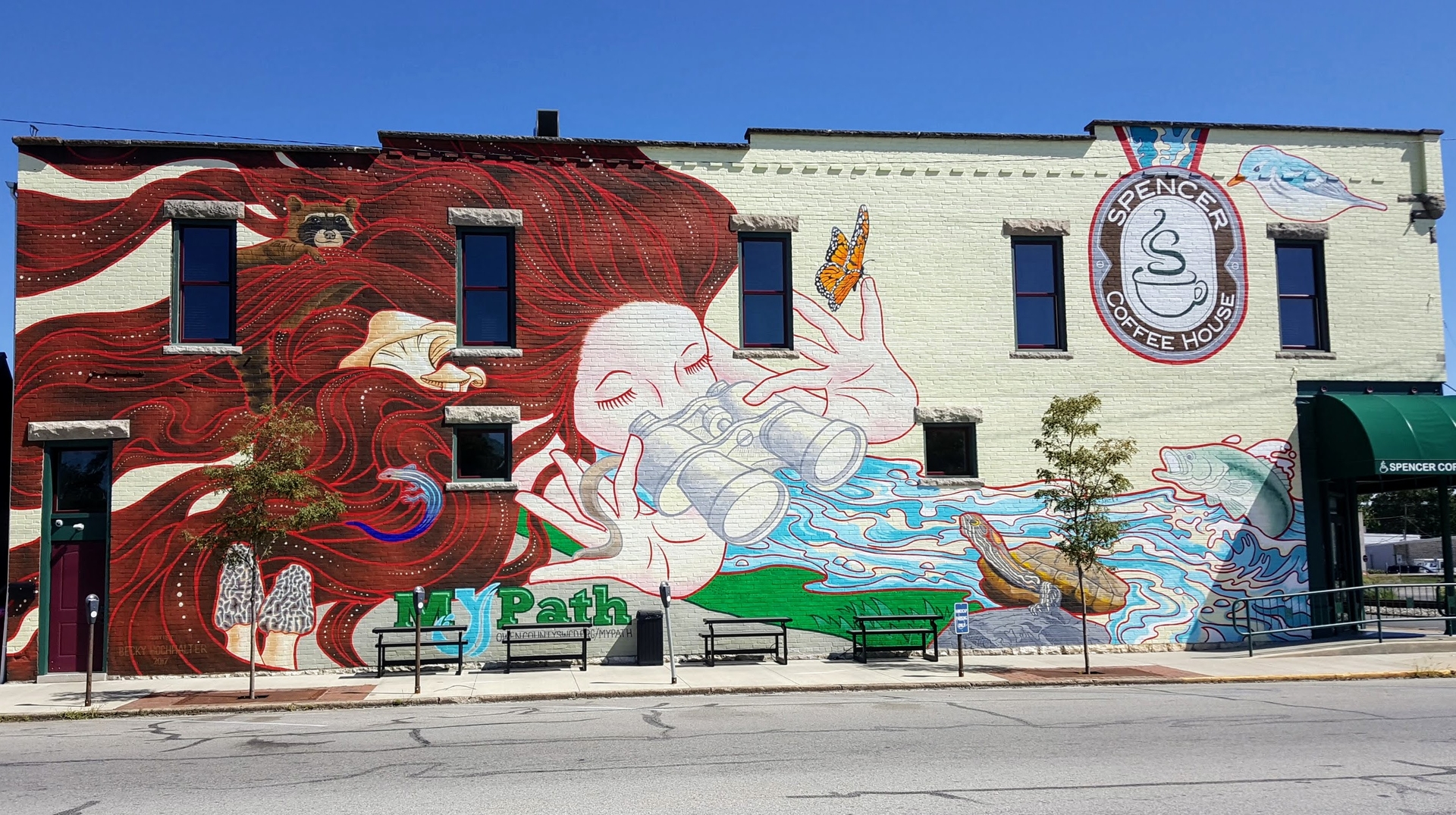
Particularly over the last year, I have regularly revisited the ideas of ‘marking’ and ‘initiation’ in discussion with my youth group and with others in my life. The frame of these discussions was almost always around the teenage context of the lads in the group. But recently, in part due to a wry comment from one of the youth, I have been thinking about the broader context of initiation, what it means to be initiated into adulthood and where is that initiation meant to lead us.
Before the marking ceremony last month, the group arrived at John Hinkel Park and we orientated them to the space. I explained to the boys that for the ceremony, we would have the youth or uninitiated on one side of the amphitheater and the adults (the implicit assumption being that they are ‘initiated’) would sit on the other side. One of the lads slyly commented at this point:
My Dad should be sitting with us then
There was a chuckle across the group and I acknowledged the observation with a quick “That’s real, there are uninitiated adults out there” before moving on with our preparation. I would love to return to that comment with the group in time but for now, I want to explore the concepts of initiation and adulthood here.
Epistemic status: Exploratory. This piece is a product of several discussions with folk and related reflections about my youth group, their recent rites of passage, and what it is to be initiated into adulthood. It draws from many conversations over several years, with folk working in the rites of passage space but (reader beware) I have not systematically researched and read up on academic fields related to adulthood or initiation (if these fields truly exist) for this post.
Initiation via rites of passage
Our rites of passage organization, Stepping Stones Project, makes a big deal out of initiation of youth into adulthood. The narrative of the organization includes the assertion that since industrialization/colonialism, many cultures have lost, had diminished or let go of the rites of passage that marked our coming-of-age life-stage, the transition from childhood to adulthood, and that this is undermining individual and communal flourishing. The organization’s program is an effort to return the primacy of coming-of-age rites of passage to contemporary society, initiating youth into the path towards full adulthood. So how common (or fair) was that lad’s observation that his father was ‘uninitiated’, since very very few of us have had a structured initiation in adulthood? I think his observation was fair, is ‘common’ across contemporary society, but that there are many many more ‘adults’ in the world than those who have undergone youth rites of passage.
In essence, I see rites of passage for youth as a positive contribution to but not a necessary condition for initiation into adulthood. Life can initiate us in its own way, over time.
Stepping Stones seeks to provide structured, intentional and communal initiation of youth into adulthood.
What does an unstructured, unintentional, non-communal coming-of-age look like for youth?
Unstructured; Without a pattern, a defined beginning or end. Even when contemporary society acknowledges the ‘coming of age’ period of our development, at best, structure is borrowed from other facets of teen life: school years, the cycle of summer holidays, birthdays, the age one can learn to drive or first work. Structure, when brought to rites of passage, creates a sense of something being built together, and a distinct history one can draw from.
Unintentional; Accidental, without thought, without awareness, going through the motions. This is common in contemporary times; How can one be intentional about creating a rite of passage when we don’t notice its absence? In circumstances where a community does have established rites of passage for youth, this is an area where they can still fall down; when the coming of age rites are practiced in a ‘going through the motions’ manner, without due care and attention to the mentorship of youth, this undermines the whole experience.
Non-communal; Singular, disconnected, alone, unwitnessed. An important part of individuation is understanding oneself in the context of community. It is a period of great change in our lives; being witnessed and seen in this transition is a powerfully connective experience for youth. Communal here should also mean the rite is shared with other youth, peers, and a common bond formed.
How might life initiate us without a rite of passage with these facets? Many societies do recognise the early teen years (~11-15) as a coming-of-age time, even if many industrialized ones also do not seem to have a handle on what to do about that. Any random child in our society will enter this phase of life and typically gets some sort of support but across a wide range of possible outcomes. Depending on their circumstances, youth will have (or not have) grand-parents, uncles and aunties, or teachers and coaches, that can offer some form of mentorship during this time. Similarly, religious community, schools, summer camps or other programs might offer formative experiences, with varying degrees of intentionally or structure about them being a ‘rite of passage’. This possible constellation of factors might be enough for some kids to be defacto ‘initiated’ but it is ultimately a roll of the dice, with mixed results.
The contemporary emphasis on the nuclear family hinders us here: youth individuate from their immediate families strongly at this time. After spending their entire existence completely submerged in the orbit of their parents, there is a something of a rejection and reexamination of what is ‘me’ and what is ‘you’, between youth and parents. Some youth could be described as being ‘allergic’ to their parents during this time. This shift in relating between youth and parents allows a critical role to be played by adult mentors during this coming-of-age period, a role that was commonly provided by ‘the village’, and prevalent in many societies over the full accounting of human history.
Self-initiation
The individuation process also drives youth to self-initiate; sensing the power adults have over them and the mysteries of adulthood, youth yearn to explore, be tested and proven. While it may not have the structure, intention or communal aspects of a full rite of passage process, self-initiation springs forth from the same developmental drive within us, and includes a similar initiatory pattern; leaving one’s comfort zone, going to the edge of our experience, returning and (ideally) reflecting on and noting the change in oneself. And, as long as we are pushing to better ourselves, we tend to continue pushing ourselves into initiatory experiences.
The bulk of adults today would have gone through this general initiatory pattern without a rite of passage process. This would largely have been with inconsistent support, with inconsistent witnessing by their community and often without the self-recognition that they are initiating themselves. Recently I facilitated a council with some adults, with the prompt “Returning to your teenage years, tell us one story about something that was a sort of an initiatory experience”. One man’s response detailed a long weekend, with several distinct episodes with his father, friends and solo adventure (involving themes of nature, getting drunk for the first time, running away and shoplifting!). He reflected on the truths, gratitude and awareness that had come to him over that long weekend but that this was the first time, as a father in his late 30s or early 40s, he had ever put together that all those experiences were an important initiation on his path towards adulthood. An extreme case but sometimes self-recognition and witnessing can still have a deep impact decades after. How many others of us are holding these moments from our lives, unwitnessed and unknown to our community?
The gap between self-initiation and facilitated initiation can be wide. For one, youth and there peers tend not to have a good sense of their limits, and when combined with peer-pressure they can wildly exceed their boundaries. Our communities ought to be cultivating and channeling this ‘spark’ of self-growth via initiation, and resist the urge to smother it, an impulse one can readily find examples of throughout the history of different societies.
A good initiatory experience must include a real edge; a challenge, a fear, a risk.
Ideally it entails overcoming or exploring that edge, and with reflection and witnessing, learning about our relationship to that edge. Having someone trusted to facilitate provides a deeper initiatory experience and reduces the risk that an experience will take the youth too far beyond their limits. Self-initiatory experiences carry much greater risk of bad outcomes and anti-social behavior: Getting completely wasted in uncontrolled circumstances, petty crime, pranks that go beyond being “harmless”, violence, diving into sexual experiences too rapidly (not to suggest these should be facilitated per se!), reckless dare-devil behavior, bullying/hazing behavior, and more. In the very worse case scenarios, this can lead to harm and trauma, leaving youth with developmental scars that will not age away with time. While an understanding of the benefits of initiation are lost on many parents, the fear of negative outcomes from these risks is very present. This fear nicely fits in with the contemporary tendency to completely remove risk-taking from the lives of children and to structure out their days. Here we see a contemporary example of how societies can smother the spark of initiation in their youth. This eliminates ‘risk’ from a child’s life, for the guaranteed outcome of them being left unprepared for life and becoming disconnected from the initiatory spark that can drive personal growth.
The other issues with the gap between self-initiation and facilitated initiation are much more subtle but equally pernicious. A facilitated initiation that integrates communal witnessing of youth helps build wider and stronger communal bonds, between the youth involved, between the youth and their direct family but also between the youth and the wider community, ‘the village’. Witnessing in this context is the gift of reflection and wisdom to the youth, a chance to give them a deeper perspective and learning about their initiatory experiences. Given the contemporary rise in ennui/listlessness, lack of purpose, alienation and disconnection, the lack of that communal bonding and witnessing is increasingly in need. While I frame an investment in coming-of-age rites of passage as something to address this, I do not see the absence of these rites as the sole cause of this sad trend. Broad societal trends tend to have many factors influencing them, and I am wary of any claims that a single factor is their source.
A model for full adulthood
Throughout my writing above, and in prior conversation and thinking, I have been brushing up against the concept of ‘adulthood’ without fully addressing it. Now is that time. Lamentations about the unquantified prevalence of uninitiated adults in our society are common today. I frame much of the “Boomers vs Millennials” back & forth as this. Here, each of those generations observes the other and readily finds short-comings in the uninitiated adults that are present in both (plus a good dose of the perennial “Kids these days!” flogging of the young generation). Luckily, both generations can be right! ;) At this point, we are generations deep into the uninitiated raising the uninitiated. While many global metrics have improved over the last few centuries, the difficult-to-quantify ‘maturity’ of society is stagnant in comparison. Before I start getting at my concept of full adulthood, I want to address why this ‘uninitiated raising the uninitiated’ is a concern.
My fear is, beyond the issues of alienation and disconnection raised earlier, that this leaves us brittle to collectively address the the challenges of living in a globalized humanity, including; global inequality, the resurgence of fundamentalist, reactionary and proto-fascist forces, and the ever-present climate challenge. This brittleness provides a wellspring of disenfranchised youth, particularly boys-in-men’s-bodies, for fundamentalists of all stripes to groom and recruit, and for reactionary figures to recruit in their call for a return to mythical past times of stability. While different in means and goals, both fundamentalists and reactionaries seek to drag us backward in time, typically seeking to reverse the victories of the civil rights movements of the 20th century, and otherwise deny society the opportunity to fully come to terms with, and liberate ourselves from, our histories of colonialism, slavery and inequality. These groups have demonstrated a better understanding of the power of belonging and initiation than most mainstream cultures, and thus, like street gangs, offer a way for young men to claim their manhood, even if it is ultimately in a self-destructive way.
Adulthood
There are so many qualitative ways for us to discuss and explore human maturation into adulthood; one of the reasons why legally we default to a simple, numeric, narrow and necessary definition of adult as someone who is 18 year old. It would be easy and foolish of me to point to a definition of full adulthood that was just a carbon-copy of my idealized concept of personhood. Clearly I have preferences but I am also trying to get at a form of adulthood that does not rely on my context or circumstances. Similarly, there are whole systems and models for human development that I do not want to bog you, the reader, and myself in, during this piece. I am seeking to get at the essence of full adulthood (which I frame as a subset of full person-hood), with the smallest descriptive area.
The four components of full adulthood that I keep returning to are:
- Responsibility
- Initiative
- Listening
- What serves?
Responsibility
Responsibility is a fairly uncontested baseline attribute of adulthood. However, the question of “responsibility for what or whom” will bring diverse answers across different people, contexts and cultures. Not wishing to get bogged down in that, I just want to retain the feeling that we collectively have a sense that responsibility, in some form, is a component of adulthood.
Initiative
Taking the initiative, to act on the world around you. Are we making choices and decisions that we are being nudged into, or are we making our own narrative in life? This trait is the mature form of the impulse to self-initiate, and its antithesis is being passive in life or just reacting to the world around you.
Listening
Full adulthood entails a deep listening. A form of listening that comes from slowing down, clearing the mind of what ‘you are going to say’ or do next, and taking in the sounds, signals and signs around us. When one listens deeply, it is harder to be disconnected from the world around you.
What serves?
“What serves?” is short-hand for three questions, derived from the Ojai foundation’s council training: “What serves me?”, “What serves those around me?”, and “What serves the wider field/community/universe?“. Very few folk use those specific phrases/questions but someone who is deep into full adulthood is operating with the essence of what those questions are getting at; “What serves?“. The questions call the above components of listening, initiative and responsibility into relationship with the self, others and the universe; with an intention to find actions, words and efforts that genuinely serve all three scopes of the question. When one can take the initiative to pause in a moment, ask the three variations, deeply listen for what is needed and take responsibility for a better path forward, that is an exemplar moment of what it is to step into full adulthood. It speaks to the realities that our ‘self’ is a complex multitude, emerging in the context of a socially constructed reality, set against the backdrop of the tangible truth of the universe.
“What serves me?”, “What serves those around me?”, and “What serves the wider field/community/universe?”
I am holding on to the idea that there are folk out in the world that I disagree with significantly, and that hold very different values, that still fit this essential criteria of full adulthood. I have a sincere respect for these folk, even if I quibble with or outright reject some aspect of their prioritizing, actions or concepts. This respect comes from recognizing diversity in the way that folk are collectively working to better the world, recognizing their maturity, and how their context has shaped their own path.
Rounding back to coming-of-age rites of passage: these rites are just the start of the journey towards full adulthood; I am certainly not suggesting we can get to full adulthood that fast! As we age, one will have more opportunities to be initiated along the path towards full adulthood, whether facilitated by ourselves, community or life.
However, the coming-of-age rites are worth emphasizing. As a society, we are placing ourselves in a developmental weak spot. This weakness comes from the mainstream obsession with the nuclear family as the best setting to raise children, resulting in an over-emphasis on parents during a time when the ‘allergic’ reaction of youth in their individuation process means parents are arguably at their lowest ability to directly mentor and guide their youth. We need a ‘village’ to rise us, a wider communal effort, one that can be a stronger container for all sorts of parenting arrangements and child-raising circumstances.
Structured, communal and intentional
As I come to the end of this piece, my thoughts turn to related questions:
- how we are creating and holding the other rites of passage in our lives?
- What is the shadow side of mentorship? How can the need to individuate or be initiated be exploited in ways that truly do not answer the question “What Serves?”
- For us ‘uninitiated’, how can we reposition ourselves along the path to full adulthood?
Lots of things bubble up in response to those. What comes up for you?
Please support the Stepping Stones Project if you can; The organization relies partially on donations, to increase the number of groups it can manage, and to cover scholarships for families that don’t have the financial means to afford the program. I donate my time, roughly 150 hours a year, to the cause but many of my co-leaders do not have the luxury of that and they need to be paid. Please, if you can, donate or contribute.
